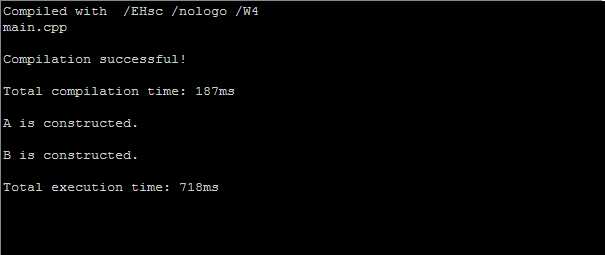标签:main har com virtual size 分享 public ted argv
class A { public: A() { Print(); } virtual void Print() { printf("A is constructed.\n"); } }; class B: public A { public: B() { Print(); } virtual void Print() { printf("B is constructed.\n"); } }; int _tmain(int argc, _TCHAR* argv[]) { A* pA = new B(); delete pA; return 0; }

先后打印出两行:A is constructed. B is constructed. 调用B的构造函数时,先会调用B的基类及A的构造函数。然后在A的构造函数里调用Print。由于此时实例的类型B的部分还没有构造好,本质上它只是A的一个实例,他的虚函数表指针指向的是类型A的虚函数表。因此此时调用的Print是A::Print,而不是B::Print。接着调用类型B的构造函数,并调用Print。此时已经开始构造B,因此此时调用的Print是B::Print。
同样是调用虚拟函数Print,我们发现在类型A的构造函数中,调用的是A::Print,在B的构造函数中,调用的是B::Print。因此虚函数在构造函数中,已经失去了虚函数的动态绑定特性。
标签:main har com virtual size 分享 public ted argv
原文地址:http://www.cnblogs.com/dsdr/p/6087059.html